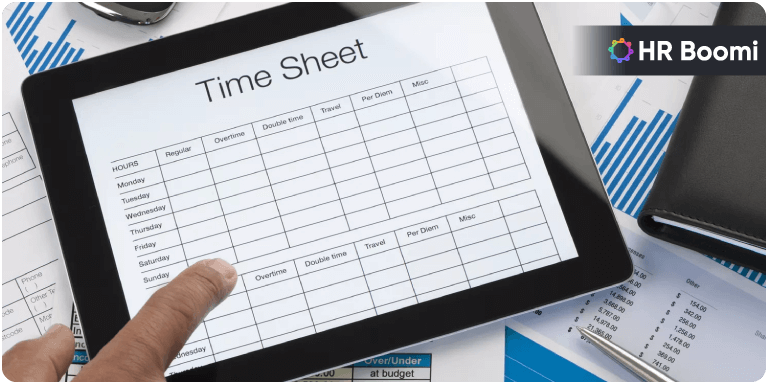
Table of Contents
Employee time-tracking is vital for any organization to run effectively. Managers can access employees’ activities during working hours, including their day-to-day tasks, remaining work, project deadlines, etc. Still, no wonder that when we talk about time-tracking, most of the time employees delay or avoid fill-in their timesheets.
Even though time-tracking helps to get real-time visibility about each employee and project, managers still find it challenging to gather accurate timesheets from all employees before the deadlines. In case you are facing the same issues in your organization, this article provides some simple steps that you can implement to motivate your employees to fill-in their timesheets on time.
7 Easy Steps to Motivate Your Employees to Fill-in Timesheets
Possibly, managers have been using the wrong technique to track employees’ time. If that is not the case, then maybe that time-tracking technique is time-consuming or difficult for employees to follow. They might think of it as a worthless process and avoid filling-in the timesheet on time. Ultimately, it can cost you a huge loss in overall productivity. Without any delay, let us go through the 7 simple steps to motivate your employees to fill-in their timesheets.
1. Automate Time-tracking in the Workplace
For centuries, manual timesheets have been a common method to track employees’ time. Although, most of the time, manual work leads to errors as well as inaccuracy in time-tracking. So, you should implement an automatic timesheet solution rather than relying on manual time-tracking. It can save you a lot of time and effort being used in administration work. Also, automation reduces the chance of human errors that mostly occur while filling and submitting timesheets. At the same time, it will reduce the time of the approval process as well.
With automated time-tracking management, employees can easily access and manage their timesheets from any location (usually if the solution is available online via SaaS).
2. Avoid Complexities in Timesheet
Still, after the implementation of automation, many employees might delay or avoid filling their timesheets. They may have thought that it is better to spend time on pending deliverables rather than filling out complex timesheets.
To avoid it from happening, ensure your timesheets are compact and simple. Also, keep it accessible from anywhere, anytime and on any device. Lengthy and complex timesheets will only end up making your employee feel frustrated and cause them to delay filing sheets out. It is important to focus on making timesheets as simple as possible so employees find it easy to complete and submit them before the deadline.
3. Communicate the Timesheet’s Benefits Properly
Profitability is one of the key motivations for any business to keep running. It becomes crucial to keep an eye on where and how the organization’s time is being spent. It can have a huge impact on the overall productivity of the company. Employees may not consider filling timesheets as an important task until they understand its advantages. So, you must explain how filling timesheets on time can benefit them in multiple ways like,
- Employees can easily understand the project records without taking any help from their managers.
- It ensures transparency at the workplace and saves employees’ time, which can be used for their skills development.
- Every team member will know their exact worked hours and can keep track of their performance level.
- They will know where they are spending more time and where they should improve in order to strengthen their workflow.
4. Give Proper Training
Provide proper training to help your employees understand procedures like, what data to fill in the timesheets and how frequently it must be submitted. You must establish clear policies and guidelines for submitting timesheets regularly. Also, communicate the importance of time-tracking and the consequences of late or missing timesheet submissions.
It is advisable that you conduct frequent training sessions to help them understand every necessary task, like logging their working hours and tracking the remaining work to avoid any delays. At the end of the training, you can arrange a necessary test. It will help you make sure that all employees know the system well. In addition, you can set up an employee help center to solve any kind of queries related to their timesheets.
5. Remember to Ask for Feedback
Whenever you implement changes in your organization like, introducing new technology or policies, ensure to take feedback from your employees. If it is constructive feedback, make sure you implement it and follow up with the employees to address their requirements.
The whole process of taking feedback should also be simple (for e.g. consider a simple online poll or an email survey). It will help you understand employees’ problems and find necessary solutions.
When asking for feedback, encourage your employees to give their honest opinions as it can help in eliminating the problems. When they do not feel comfortable providing honest feedback, it can negatively impact their job satisfaction. Therefore, gain their trust, value the opinions and take required actions accordingly.
6. Avoid Having a Large Number of Tracking Items and Systems
When employees have a big list of tasks (like, training, internal meetings, and so on) to track, it can be overwhelming for them. A large number of tasks being tracked can lead to confusion, and employees might end up making mistakes.
To simplify the process, you should use a single system for employee time-tracking. It will allow each employee to fill in their tasks in a single interface, making time recording more accurate and faster.
7. Say No to Micromanagement
It is common for some projects to take longer to finish than others, and it can be difficult to determine how much effort is required. When managers solely rely on timesheet data, it can result in nitpicking and micromanagement. Ultimately, employee loyalty may get damaged.
However, it is essential to ensure that no team member intentionally delays their deliverables. Time-tracking is the best way to identify such kinds of employees and take forward steps towards completion of the project before deadlines.
Summary
All these tips can help you motivate your workforce to fill out and submit their timesheets on time while maintaining accuracy. We know that technology has made most organizational processes much easier. But, relying solely on automated systems can result in a big mistake. It is important to engage with your employees on a regular basis and consider their feedback about existing time-tracking processes. It will help you to build a positive workplace environment and improve your employer brand.
Recent Posts
-

In-house vs. Outsourced Payroll: Pros and Cons
-

Mastering Talent Retention: A Corporate Challenge
-

What is employer branding and how to apply it in your company?
-

The Significance of Employee Communication Within
-

What is time management and why is it important?
-

Net salary: what is it and how is it calculated?
-

Enhancing Employee Experience: Strategies for Excellence
-

10 Best Gifts to Boost Sales Channels
